For six months, from the summer solstice last June to the winter solstice in December, Grace Emmet walked through Beech Forest in Provincetown every week — 27 times in all. She watched the forest swell with the lush burden of summer, saw it flare and fade in autumn, observed the woods in early winter, newly naked and hushed with cold.
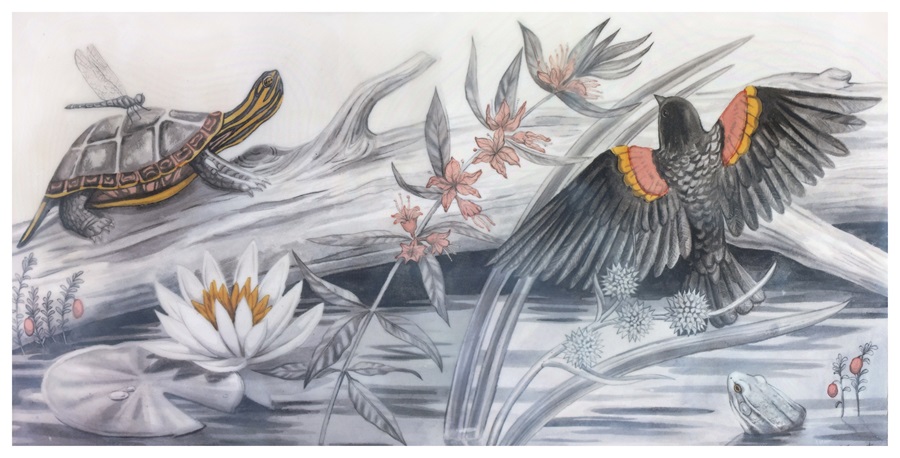
“In a year with adequate rainfall, the pond mirrors the beauty of all of Beech Forest in its watery reflection to anyone who stands at its shore. The oaks, beech, maple, and pine across the pond melt together on the surface, broken by the ripples of a wading sandpiper. Spiraling blooms of meadowsweet sway with their long stamens flickering like pretty white eyelashes.” — from Solstice Tree by Grace Emmet
Beech Forest, located in the Cape Cod National Seashore just west of Race Point Beach, is an “old-growth” forest — at 600 years old, it’s never been logged. It’s an example of what the dunes of the National Seashore looked like before they were deforested by Europeans for farming.
Emmet, who lives in Brewster and is the curator of community education at the Provincetown Art Association and Museum, was watching for more than the usual seasonal change. She was observing the progression of beech leaf disease in the forest: a disease caused by a bird-borne non-native foliar nematode — a microscopic roundworm — that devours the buds and leaves of the trees, exhausting them before it kills them. Trees are more susceptible in drier seasons, more common now because of climate change.
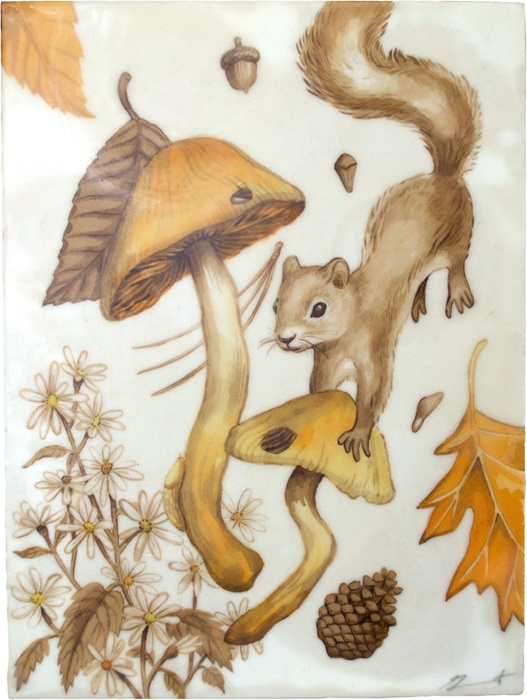
“As a monarch, Beech rules with a stern gracefulness and can be surprisingly generous to its subjects. Every few years, the forest supplies a bounty of beechnuts, a triangular seed with an almost comical husk resembling a fictitious carnivorous plant or spiky banana peel.”
She had read a report on the disease by Kai Potter in the Independent after it was first noticed in Beech Forest in 2021. A couple of years later, in a naturalist certification course she took at Mass Audubon, participants were encouraged to pursue an environment-related project. Emmet decided her project would be a visual story. So, as she walked, she took notes; the project became an intersection of illustration and transcription. The result: a book, which Emmet self-published, titled Solstice Tree: A Story of a Forest in Times of Darkness and Light. A launch party for the book is scheduled for 6 p.m. on July 13 at Farm Projects in Wellfleet.
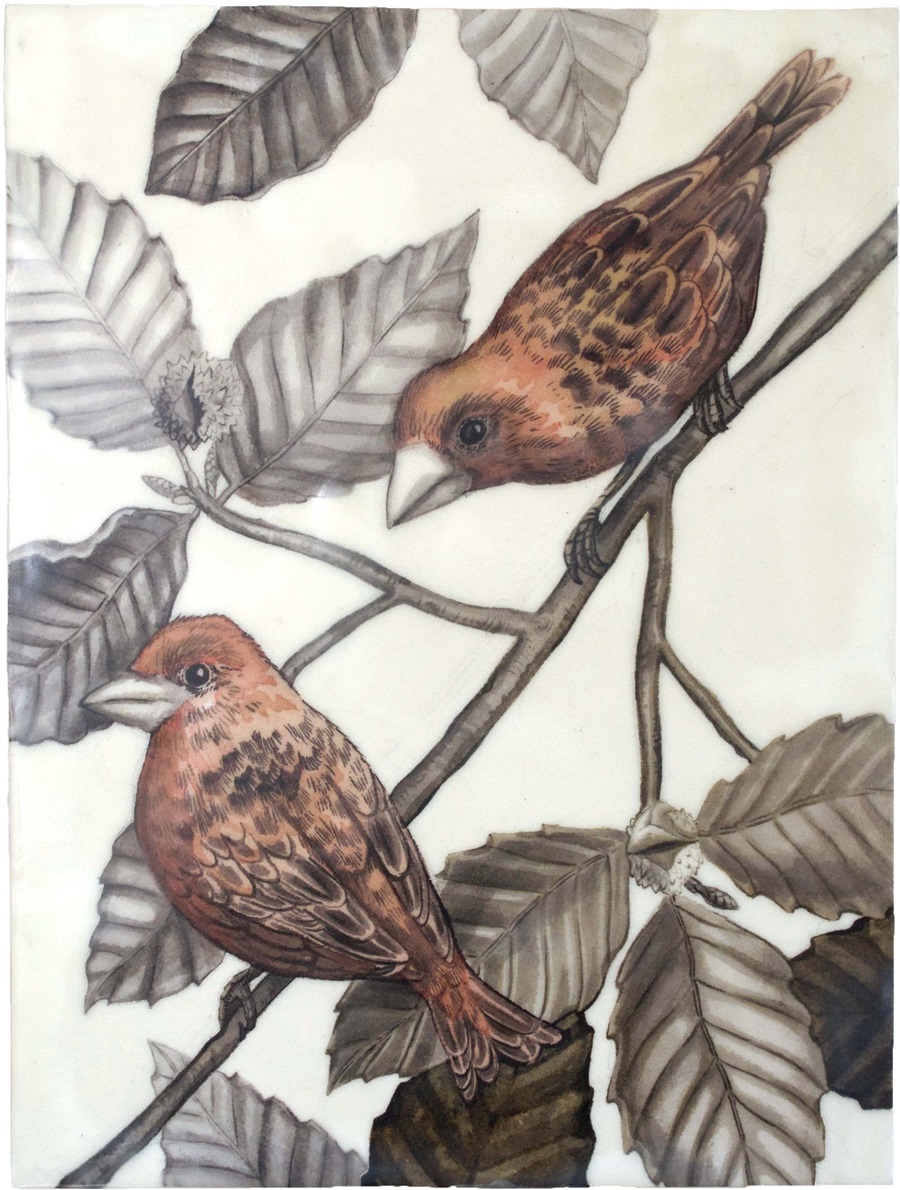
Emmet’s writing is observational to the point of meditation; she marks every needle, describes every birdcall, records every scent. Some passages sound like a naturalist’s guide; others like poetry.
Some of her illustrations are crowded with life; some feel lonely. All are colored with natural ink she makes herself out of yellow coreopsis flowers, red court mushrooms, and black walnut.

A series of ecoprints documents the transformation of the beech leaves. After each walk, Emmet pressed the leaves she’d collected between watercolor paper and rusty soup cans and boiled them; once they were dried and pressed, she found the tannins from the leaves left behind ghostly silhouettes. She sealed the prints in encaustic wax and, into the wax, etched the animals she’d seen that day. A thorough Beech Forest species index occupies the last part of the book.
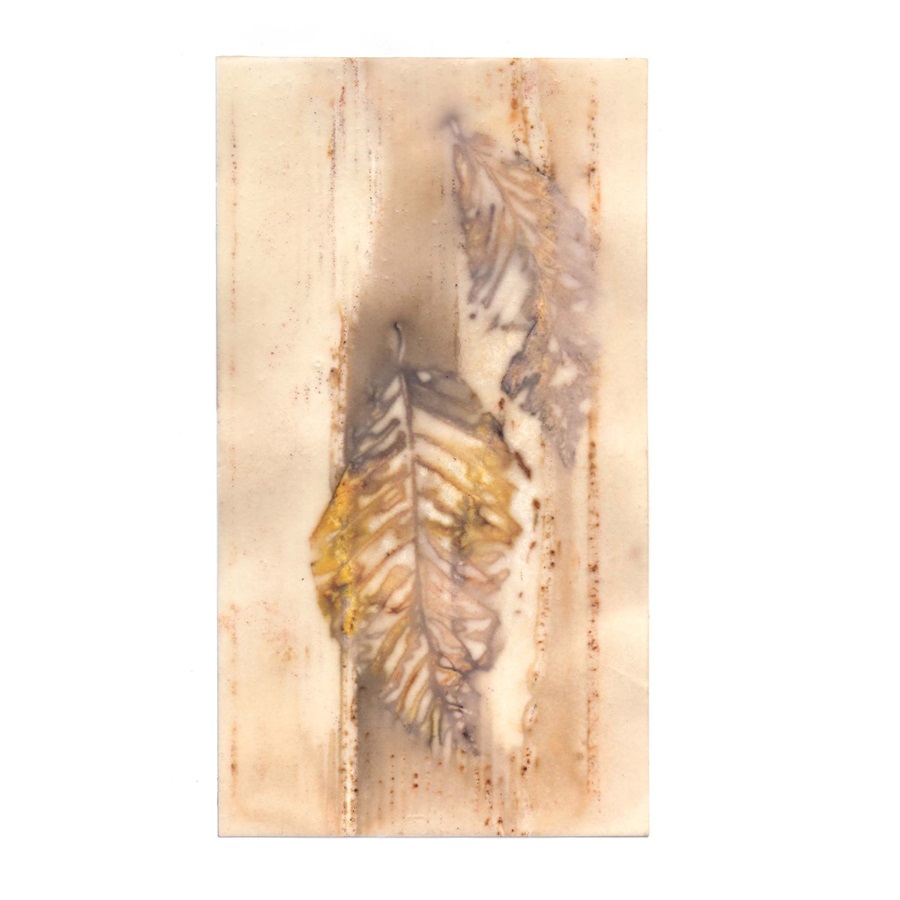
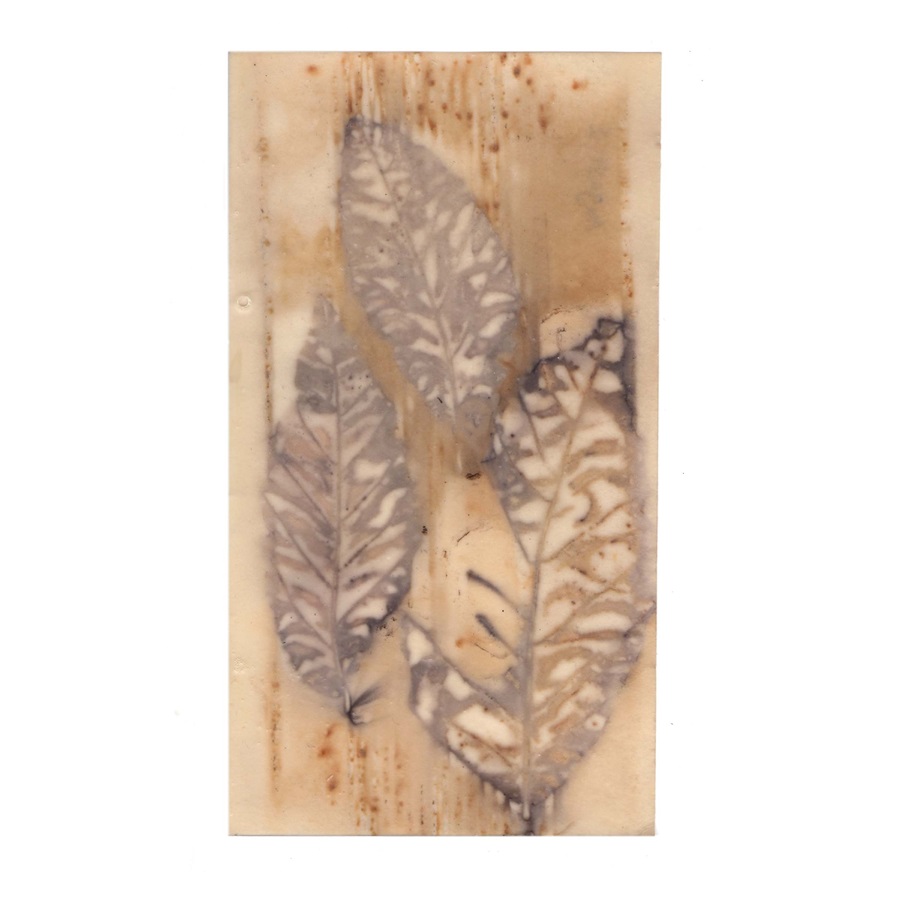
“In my less bleak daydreams, I imagine that amongst the wreckage emerge a few trees with natural immunity, acting as the links between past and future generations of beech.”
For an ecosystem so ancient, the forest’s death has been startlingly visible. Emmet watched the beech leaves curl and contract. Sick leaves feel like leather; they crisp in the sun, Emmet writes. The trees become “skeletons of their former selves.”
During the six-month observation period, she grieved the trees, she says. But “every single walk that I took, I’d see something new. I think it goes to show how much life there really is all around us, all the time, if you’re just looking for it.”
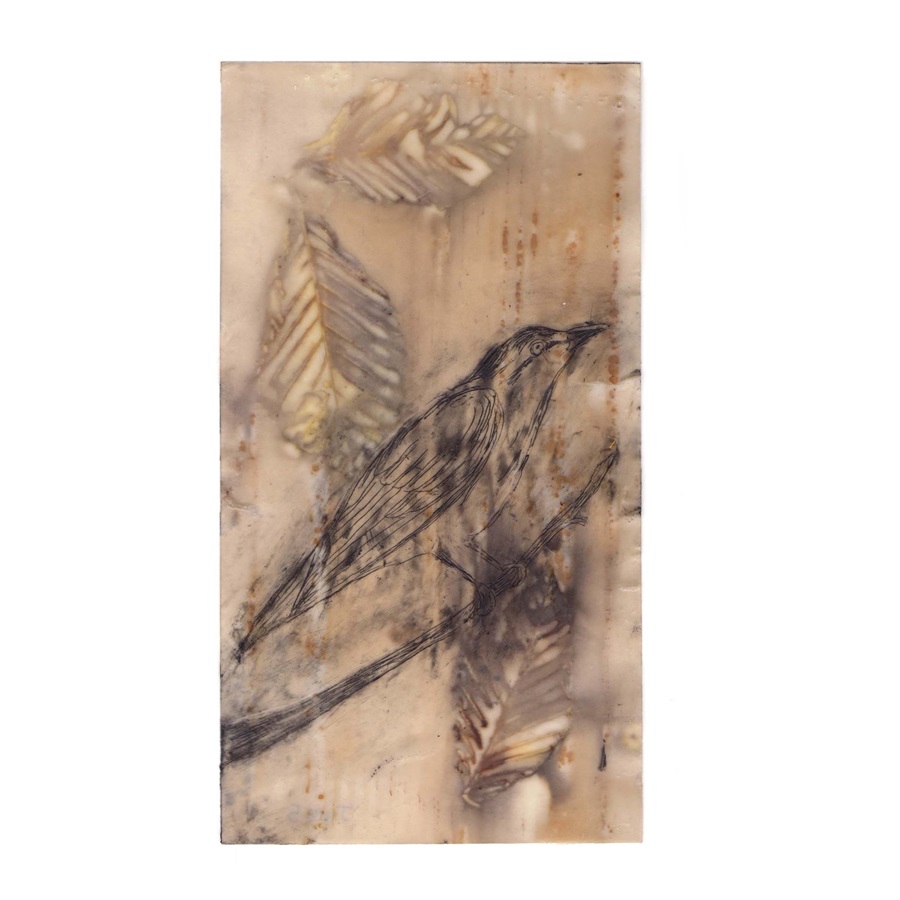
“During my time roaming the pine and oak forests of the Outer Cape, I have found handfuls of solitary beech in the understory that remain healthy, like the cavalry had yet to reach their lands with news of the ensuing war. On a sticky July evening, I came across a healthy sapling on the edge of a woodland off of Fox Bottom. … A large fallen branch of a nearby oak hung awkwardly on the side of the beech’s body, causing it to lean to one side. I stepped into the thicket of black huckleberries and untwisted the tangled oak’s limb from the sapling’s embrace and watched it spring back to life. As I cradled the beech’s perfectly uniform leaves in my palm and ran my thumb along its gentle serrations, I realized that this starry-eyed individualist may be a last holdout.”
The beech trees can’t be saved. In 2023, National Seashore plant ecologist Stephen Smith told the Independent that most would be gone in five years. Eventually, he said, they’d be replaced by native species like red maples, oaks, and black gums.
“The world is changing, and there’s not a whole lot we can do to stop it,” says Emmet. But, she seems to say, we also can’t look away.
